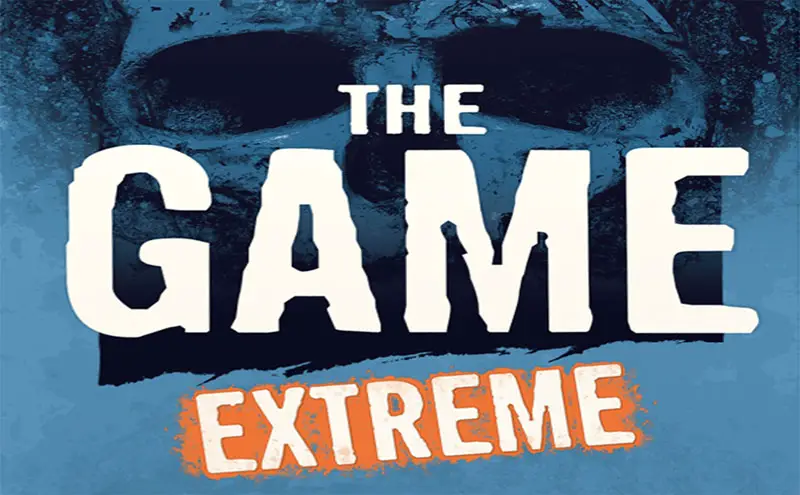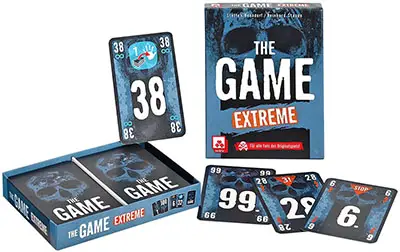
The rules of the original game stay the same and apply in this version, too. The order of play and game setup are also the same: Each player receives 6 cards per hand (for 3, 4 or 5 players), 7 cards for a 2-player game and 8 cards when playing solo.
On your turn, you have to play at least 2 cards, just like in the original game. Once the draw pile has been used up, only 1 single card must be played.

New in this version are 28 commands (7 different commands that appear 4 times each) on 28 cards. On your turn, if you play a card that has a command on it, you must perform the command exactly as shown, otherwise you immediately lose the game.
You are allowed to play multiple command cards on your turn, but then you must strictly carry out all commands. You are also allowed to talk to one another about the commands, for example, to say which commands you have in your hand, or which ones you had better not play.
As before, you are still not allowed to say anything about any concrete numbers.
The 3 Lightning Bolt Symbols 
Commands with a lightning bolt symbol must be carried out immediately. They always only apply to the player whose turn it is and who plays them in his action. Once you have finished your turn, the played lightning bolt commands have no further meaning.

If you play a stop card, your turn is over immediately. You can also play this card first. In this case, your turn would be immediately over after playing only one card.

If you play a skull and crossbones card you have to play a card on top of it on the same turn. The skull and crossbones card may not be showing at the top of a stack at the end of your turn.
Note: Should you manage to play all 98 cards onto the stacks of cards, but on the very last turn the skull and crossbones card is showing on any of the stacks of cards, you have still lost the game.

On your turn, you have to play exactly 3 cards. You can play a stop card as your third card (and only as your third card).
Example: Tim first plays a normal number card, then the "3!" card, and as his third card, the stop card. As required, he has played exactly 3 cards and then picks up 3 cards.
Note: At the end of the game, if the last player has only one or two cards in his hand to begin his turn, he can play a "3!" card, but he will lose the game because the command was not carried out exactly.
The 4 Infinity Symbols 
Commands with an infinity symbol apply from the moment on when they have been played. And they continue to apply for all players as long as they are showing at the top of a stack.
If there are more than one of such commands showing at the top of different stacks, they all apply. If one of these commands has been covered by another card, it no longer applies from this moment on.

Players are not allowed to communicate with one another about the game, which also includes any form of signals.

The player whose turn it is, is no longer allowed to use the backwards trick. This applies to all 4 stacks.

The player whose turn it is must play all cards on his turn on a single stack. It is the player's choice onto which stack of cards he wants to play his cards.

The player whose turn it is may pick up only one card at the end of his action, regardless of how many cards he has played. That means it is possible to have fewer cards in your hand than you normally would.
Once the command card has been covered by a new card, the player can once again replenish his hand at the end of his turn until he once again has the original number of cards in his hand (8 cards when playing solo, 7 cards for a 2-player game, 6 cards for 3, 4 or 5 players).
Continue Reading
